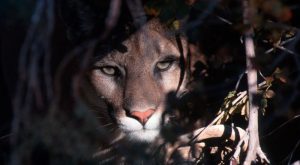Cara Byington is a science writer for The Nature Conservancy covering the work of Conservancy scientists and partners. A misplaced Floridian living in Maryland, she is especially fond of any story assignment involving boats and islands, and when not working, can be found hiking, kayaking or traveling with her family and friends. Best mammals + herps + fish + birds (so far) in 2025….yellow-bellied sapsucker, Florida gar, American alligator that crossed the road in front of us on the Tamiami Trail, and (the prize of all prizes) a resplendent quetzal!
Cara Cannon Byington
Science Writer

Featured Stories from Cara
-
7 Strange Species from the Ocean’s Depths
Eye-eating worms, crabs that look like a yeti, and eels that help fish hunt.
Matthew L. Miller, Justine E. Hausheer, and Cara Cannon Byington
-
What’s That Weird Noise in the Night?
You’re laying in bed, sound asleep, or counting leaping sheep as you drift off into dreams. And then, a scream.
Justine E. Hausheer, Cara Cannon Byington, and Matthew L. Miller
-
The Sound of Merlin: Like Shazam, but for Birds
Just like Shazam helps identify songs, the Merlin App does the same for birds, but for cedar wax wings and ovenbirds instead of 80s Hair Bands
Cara Cannon Byington
-
The Mountain Lion in the Window
The subject of the message was: OMG! Mountain Lion Kitten in Window Well!!!! And really, it just got more interesting from there.
Cara Cannon Byington
All Stories from Cara
-
Greener Cities, Cleaner Air: How Urban Design Can Help Save Native Birds
Urban greening and pollution reduction restore bird habitats. This research shows how conservation transforms cities for people and nature.
Cara Cannon Byington
-
Grazing Lands as Climate Solutions: Key Practices for Carbon and Biodiversity
Study finds wetland restoration, pasture planting, and adjusted grazing can boost soil carbon and cut emissions—but more research is needed for lasting impact.
Cara Cannon Byington
-
Mangroves Slash Hurricane Damage in Florida by Billions
In Collier County alone, mangroves cut annual losses by $67M and prevented $4B in damages during Hurricane Ian.
Cara Cannon Byington
-
Solar’s Hidden Footprint: Why Accurate Land Data Matters for Conservation
New research reveals solar datasets underestimate land use by up to 34%, masking habitat loss in natural areas.
Cara Cannon Byington
-
Forest Carbon Projects May Help More Than We Thought—New Study Finds Leakage Often Overestimated
New findings challenge current carbon market accounting practices and advocate for more nuanced, carbon-specific leakage estimates to ensure integrity and unlock greater investment in Climate Smart Forestry as a natural climate solution.
Cara Cannon Byington
-
Maximizing Climate Returns: Albedo Accounting for Smarter Carbon Investments
New research shows how the albedo effect—Earth’s reflectivity—influences how well forest restoration projects can help cool the Earth.
Cara Cannon Byington
-
Breakfast with the Resplendent Quetzal
Haunting the cloud forest on a quest to find the magnificent, and increasingly rare, national bird of Guatemala
Cara Cannon Byington
-
How Living Cover Could Help Heal the U.S. Corn Belt
Regenerative ag practices—like cover crops, agroforestry, and pastured livestock—could reduce nitrate loss, erosion and emissions.
Cara Cannon Byington











